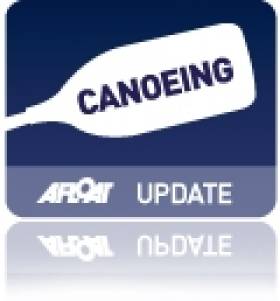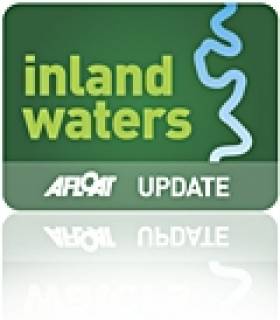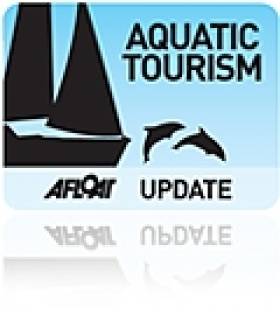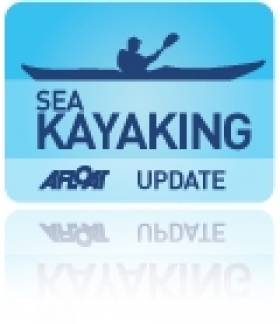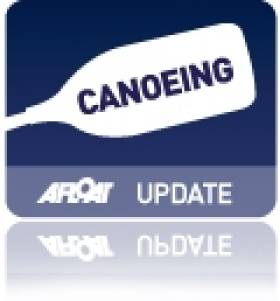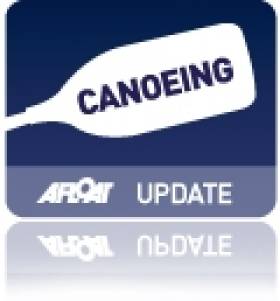Displaying items by tag: Kayaking
Irish Kayaking Intervarsities This Weekend
#KAYAKING - The Galway Advertiser reports that the Galway-Mayo Institute of Technology (GMIT) at Castlebar will host the Irish Kayaking Intervarsities this weekend from today 17 February.
Eighteen colleges will compete in events on the Clydagh river and Lough Lannagh in divisions from whitewater and freestyle to canoe polo and long distance.
“The Kayaking Intervarsities will be a good way to highlight this adventure sports hub and the excellent town centre watersports amenity of Lough Lannagh," said Stephen Hannon of GMIT.
“For spectators the location is very convenient," he added. "People will have an opportunity to see a sport that is sometimes under the radar but at which Ireland has been represented in every Olympics since Munich in 1972.”
The Galway Advertiser has more on the story HERE.
Search for Missing Kayaker to Continue in Kerry
#NEWS UPDATE - Breaking News reports that the search for a 38-year-old man who went kayaking near Cromane in Co Kerry in the early hours of yesterday will resume this morning.
The alarm was raised yesterday morning after the man - named locally as Nealie O'Connor, and the father of a two-month-old baby - failed to return from his lake kayaking trip.
First Phase of Thomastown River Project Complete
#INLAND WATERWAYS - The first phase of a project to restore the Thomastown river was launched at the weekend with the opening of a new weir, the Kilkenny People reports.
Fundraising efforts by the Thomastown Community River Trust have already led to the regeneration of the riverbank from the town up to Thomastown Viaduct.
The new causeway also forms part of a planned trail from Bennettsbridge to Inistioge.
The trust's project was "focused on using environmentally friendly and sustainable engineering", working in partnership "with a diverse range of groups from walkers to kayakers and anglers".
Work is already underway on the second phase that aims to see the restoration of the weir, which collapsed in 2008, as well as the sluice and mill wheel, in an effort to re-establish the swimming pond and fish pass.
The Kilkenny People has more on the story HERE.
Cork The Place to Be For a Holiday On The Sea
#TOURISM - Winter might be upon us, but it's a great time to plan a new year holiday in Ireland on the sea, according to the UK's Daily Echo.
From night-time paddling in with renowned kayaking instructor Jim Kennedy, to snorkelling in Baltimore, relaxing in Skibbereen and and fresh seafood lunches in Kinsale, a vacation in Cork can appeal to any taste.
Whale and dolphin watching is a big draw for the region, too, as Ireland's coast – the first cetacean sanctuary in Europe - plays host to a growing variety of species.
The summer feeding grounds off the southern coast are particularly busy, and tourist boats are often treated to whales breaching the surface and surrounded by dolphins putting on a show.
The Daily Echo has more on the story HERE.
First Sighting of a Dolphin in an Irish Lake
#MARINE WILDLIFE - The first recorded sighting of a dolphin in an Irish lake has been reported by the Irish Whale and Dolphin Group (IWDG), according to The Irish Times.
The dolphin was spotted in Lough Hyne, a saltwater lake near Baltimore in Co Cork by Skibbereen-based kayaking instructor Jim Kennedy, who filmed it over a number of days.
"To the best of my knowledge, and I’m open to correction, this is the first validated record of a cetacean using an Irish lake," said the IWDG's Pádraig Whooley.
Though there have been no further sightings since then, there is nothing to indicate that the dolphin has yet left the lough for the open sea.
As previously reported on Afloat.ie, Lough Hyne was also recently visited by a 13-metre fin whale that was sadly found beached in stormy conditions on the Sligo coast this week.
The Irish Times has more on the story HERE.
Catch the North Coast Sea Kayak Trail On TV This Sunday
#KAYAKING - Northern Ireland's new North Coast Sea Kayak Trail is set to feature on BBC TV this weekend, OutdoorNI reports.
Earlier this month, Ellie Harrison from BBC's Countryfile programme paddled the trail with local guide Robin Ruddock and also visited the Port Moon Bothy, an old cottage refurbished as a rest stop for kayakers on the trail.
"The North Coast Sea Kayak Trail will offer a completely unique way to explore the Causeway Coast and the converted bothy at Port Moon is fast becoming the most talked about and indeed most spectacular accommodation in Ireland,” said CanoeNI.
The new trail joins a host of coastal canoe routes launched this year by CanoeNI, as previously reported on Afloat.ie.
Catch the North Coast Sea Kayak Trail on Countryfile this Sunday 27 November at 6.25pm on BBC One Northern Ireland.
Winter Kayaking on the Lakes of Killarney
Bookings are now available for kayaking trips on the lakes of Killarney over the winter months of 2011-2012.
Kayaking on Lough Lein can be done all throughout the winter, the locale providing some great sheltered bays to paddle.
Irish Adventures runs kayaking trips on Lough Lein with a minimum of 2 people (€50 per person).
The route runs from Ross Castle with landings on Inisfallen Island and Ross Island to see the Bronze Age copper mines. There may even be a chance to get a glimpse of the white tailed eagle introduced to Killarney National Park.
All equipment (wetsuits, booties, waterproof jacket and hats) will be supplied.
To book call Irish Adventures at 087 419 0318 (morings 9.30am-12.30pm; afternoons 2pm-5pm) or e-mail [email protected].
Welsh Kayaker Sets New Irish Sea Crossing Record
According to Canoe & Kayak, last Saturday 2 October Anglesey man John Willacy crossed from Soldier's Point in Holyhead to Howth in Dublin - a distance of 55.8 nautical miles - in 11 hours 19 minutes and 59 seconds.
It's not the first open sea kayaking record set by Willacy, who last year broke the record for circumnavigation of the Isle of Man in 12 hours 38 minutes.
Shooter to Give Talk on Record-Setting Kayak Voyage Round Ireland
Elaine 'Shooter' Alexander will be giving a public talk on her remarkable circumnavigation of Ireland by kayak in Co Fermanagh next month.
During the summer Afloat.ie tracked Shooter's progress as she battled against the elements to complete the round-Ireland route in 71 days - becoming the first woman to circumnavigate the island solo by kayak.
The Ulster woman had been training for over a year for the challenge, which was intended to raise funds for the Fermanagh-based SHARE, a charity that brings together disabled and non-disabled people in arts and outdoor-based activities.
On Saturday 22 October Shooter will be at the SHARE Centre in Lisnaskea to give a presentation and audio/visual show about her journey, followed by a question and answer session.
There will also be a meet-and-greet opportunity, as well as a chance to see the gear that she used on her epic voyage.
Tickets are priced at £7 for adults, £4 for children/OAPs/students/concessions, and £15 for a family ticket (2 adults/2 children).
Special B&B rates of £15 for adults and £10 for children are also available for those who want to make a night of it.
For all booking enquiries please contact [email protected].
The latest issue of Canoe & Kayak magazine takes in-depth look into sea kayakers Jeff Allen and Harry Whelan's record breaking circumnavigation of Ireland.
The final 225 miles of the voyage were completed in an incredible three days - a challenge that pushed the experiences kayakers to their physical and mental limits.
But the reward was a new speed record for kayaking round Ireland in just 24 days.
As previously reported on Afloat.ie, a documentary on the duo's feat is currently in the works.


























